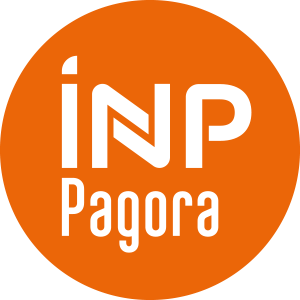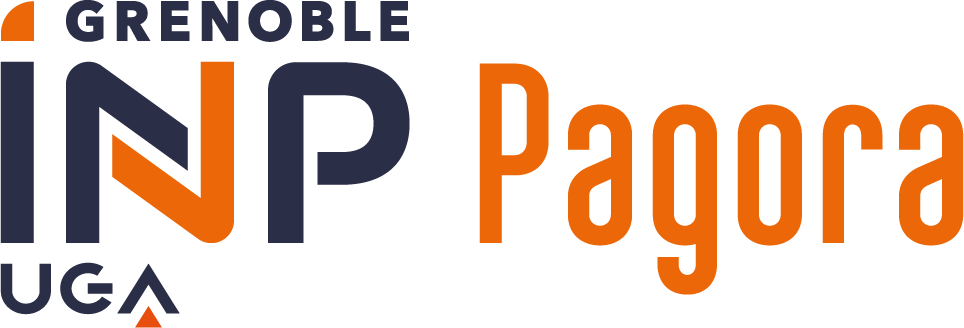Number of hours
- Lectures 1.5
- Projects -
- Tutorials 10.0
- Internship -
- Laboratory works 24.0
ECTS
ECTS 30.0
Goal(s)
Learning outcome:
Write transfer problems into equations
- Model transfer phenomena coupled to chemical reactions; gas-liquid, fluid-solid reactions.
- Model mass transfer phenomena coupled to enthalpy transfers (dryers).
- Model reactor flows using the residence time distribution (RSD) method.
Objectives :
1.model a real reactor using hydrodynamic tracing (establish the theoretical model and determine the parameters for the experimental study)
2.identify malfunctions in real reactors using hydrodynamic tracing
3.model the drying of solid materials (sheet, foil and foam)
4.design a sludge drying bed
5.model the chemical washing of an odorous gas stream
6.determine parameters for sizing a scrubbing reactor
7.model the transfer and chemical reaction between a liquid and a solid
8.determine reaction conditions and parameters for sizing the reactor
Agnes BOYER
Content(s)
Gas-liquid mass transfer coupled to a chemical reaction
Mass transfer models for heterogeneous fluid-solid reactions
Coupled heat and mass transfer: introduction to cooling and evaporation systems
Building models and their mathematical resolution (based on the integration of differential equations)
Practical application of the mass transfer course.
Comparison of DTS in a cascade of stirred mixers and in a column reactor.
Comparison of the evaporation of a sheet of water and the drying of paper in ambient air.
Study of a non-condensing heat exchanger.
Mathematical simulation of an ozonation reactor.
Mathematical simulation of a reaction wafer or fiber.
Notions to be used during the sessions :
Gas-liquid mass transfer with chemical reaction.
Convective transfer: boundary layer contraction theory, Hatta number, efficiency factor.
Diffusion in the presence of chemical reaction: modeling.
Fluid-solid matter transfer: introduction to particulate heterogeneous kinetics, mathematical formatting.
Coupled heat/matter transfer with phase change
Matter transfer modeling. Integration of differential equations: Cauchy problem; explicit and implicit schemes.
Laplace-type partial differential equations: finite difference method.
Fluid mechanics course (Pagora 1st year curriculum)
Mass Transfer 1 (Pagora 1st year curriculum)
Reactor course
Process Engineering Unit Operations course
Introduction to transfer phenomena course (Pagora 1st year)
4 mid-course graded theory reports (1 per theme) - 20% of the grade
Preparation of practical work sessions: drafting of protocols to address the PPA problem - 10%.
4 final reports (1 for each theme) - 20% of final grade
Individual final exam on paper (1h30): answer to questions on one of the themes chosen at random at the beginning of the exam. Only 1 double-sided A4 sheet per theme is allowed as a document - 25%
Individual oral (10 min): two questions chosen at random at the start of the oral. Only 1 double-sided A4 sheet per theme are allowed as documents - 20%.
20% - Rapports intermédiaires
10% - préparation des TP
20% - Rapports finaux
25% - examen écrit
20% - examen oral
5% - texte compétence
1 élément manquant : Note finale = 0
Pondération :
participation active : 1.2
participation normale : 1
participation insuffisante (absences en TRAP ou manque d'implication relevé par le reste du groupe) : 0.6
The course exists in the following branches:
- Curriculum - Pagora Engineer - Student - Semester 6
Course ID : 3FME3043
Course language(s): 
You can find this course among all other courses.
Environmental security
Respect des consignes de sécurité énoncées au démarrage de l’activité.
Les élèves n'ayant pas suivi la formation sécurité lors de l'intégration à Pagora ne sont pas autorisés à manipuler en TP
BIRD R.B., STEWART W.E., LIGHTFOOT E.N. Transport phenomena. New York : John Wiley& Sons, 1962.
MIDDLEMAN S. An introduction to mass and heat transfer. Principles of analysis and design. New York : John Wiley&Sons, 1998, 691 pages (ISBN 0-471-11176-7).
BRODKEY R. S., HERSHEY H.C. Transport phenomena: a unified approach. New York : McGraw Hill-College, 1988, 847 pages (ISBN 9780070079632).
DEEN W.M. Analysis of transport phenomena. Oxford University Press, NY, 1998, 624 pages (ISBN 978-0-19-508494-8).
DOUGLAS J.M. Conceptual design of chemical processes. McGaw-Hill, N.Y, 1988, Lavoisier, Paris, 602 pages.
CRANK J. The mathematics of diffusion. 2e éd. Oxford : Clarendon press, : Oxford University Press, 1979, 424 pages (ISBN 978098534112).
GREEN D. Perry's chemical engineer's handbook. 7e éd. New York : Mc Graw-Hill Ed., 1997.
COEURET F., STORCK A. Eléments de génie électrochimique. Paris : TEC/DOC Lavoisier, 1984 (ISBN 2-85206-243-7).
LEVENSPIEL O. Chemical reaction engineering. 2e éd. New York : John Wiley&Sons, 1972.
VILLERMAUX J. Génie de la réaction chimique. 2e éd. Paris : Lavoisier,1993, 448 pages.
SCHMIDT L.D. The engineering of chemical reactions. Oxford University Press, N.Y., 1998.
FOGLER H. S. Elements of chemical reaction engineering. 3e éd. Prentice Hall, 1999.



